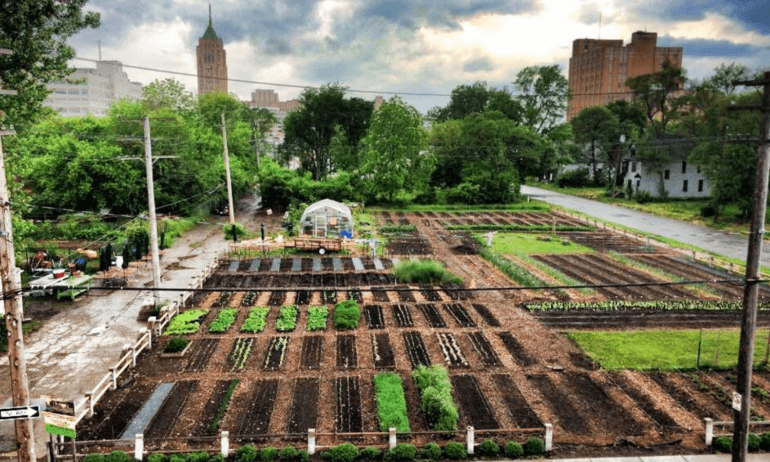How City Blooming can Save You Time, Stress, and Money.
How City Blooming can Save You Time, Stress, and Money.
Blog Article
Our City Blooming Diaries
Table of ContentsThe 2-Minute Rule for City BloomingWhat Does City Blooming Mean?The Only Guide to City BloomingThe Basic Principles Of City Blooming How City Blooming can Save You Time, Stress, and Money.
Interested in expanding food offer for sale in the City of Chicago? Thinking of starting a community yard? Adjustments to the Chicago Zoning Ordinance permit farming usages like neighborhood gardens and urban farms in several parts of the city. Below is a list of frequently asked inquiries pertaining to the guidelines and regulations that cultivators should think about when planning a city agriculture task.
The zoning modification does not modify any type of various other codes managing composting, building authorizations, purchasing or leasing City had building, company licenses or environmental contamination. There are existing codes that manage these concerns and they remain in complete effect and might apply to your job. Community gardens are typically owned or handled by public entities, public organizations or community-based organizations and preserved by volunteers.
Urban ranches expand food that is intended to be offered, either on a not-for-profit or for-profit basis. Due to their business objective, city farms require a business certificate.
Indicators on City Blooming You Need To Know
The quantity of garden compost material can not go beyond 25 cubic lawns at any kind of provided time according to the standards in 7-28-715 of the City's Municipal Code. Since the soil at the majority of brand-new garden websites needs modifying, garden compost, dirt, wood chips, or various other materials can be obtained to construct or improve the expanding space.
:max_bytes(150000):strip_icc()/womanonrooftopurbangarden-7fffbb3897ac48f390d94b9545d4d082.jpg)
If a structure authorization is called for after that the hoophouse will certainly be considered an accessory structure. You can discover more regarding the building authorization demands by speaking to the Division of Buildings. The 25,000-square-foot dimension limitation is intended to stop a single neighborhood garden from dominating a provided block or interfering with the block's existing residential or industrial personality.
The limitation does not use to gardens found in Public Open Space (POS) districts. Can there be even more than one community garden that is 25,000 square feet on a solitary block? Fencing is not needed, however, gardens that have big auto parking locations may be needed to mount fencing or other landscape design attributes.
The Definitive Guide to City Blooming
B1 & B2 areas require that all industrial use activities be carried out inside your home. R districts limit industrial activity. The policies mirror the function and intent of the Zoning Code. Is fence needed for urban farms? Yes. Fencings may be required, in addition to landscaping and screening, for certain parking lot and outdoor work or storage areas depending on place and the certain activity occurring.
Yes. Urban ranches need structure authorizations and zoning authorizations before construction. Other forms of city review may be required depending upon certain structures, tasks, dimension, landscape design, licensing, public heath and stormwater administration problems. Many of these requirements are identified in the task design or permitting process, however, the candidate might be responsible to individually determine specific licenses or allows that may be called for.
The Department of Business Affairs and Customer Defense can assist determine the certain kind of company certificate that's required. Off road parking is required for many business tasks in Chicago. The needed number of parking areas is based on the number of staff members functioning on site and not the square video footage of the growing area.
4 Simple Techniques For City Blooming

Yes. A metropolitan ranch can market compost material produced on website, nonetheless, the operation must abide by the laws in 7-28-715 of the Chicago Municipal Code. Yes. Aquaponic systems are allowed inside your home on metropolitan ranches in several zoning areas. However, a zoning review and building license is called for in order to mount frameworks or systems and a business license is needed as defined over.
Approximately 5 hives or colonies of honey bees may be kept as an accessory usage. Beekeepers need to register with the Illinois Department of Farming. To find out more regarding the suggested zoning amendment you might call the Division of Real Estate and Economic Development, Bureau of Preparation and Zoning at 312.744.8563.
Farming in cities and metropolitan locations A metropolitan farm in Chicago. Urban farming describes numerous methods of cultivating. http://go.bubbl.us/e31e8c/192c?/City-Blooming, processing, and distributing food in metropolitan areas. The term likewise puts on the area activities of animal husbandry, tank farming, beekeeping, and horticulture in a metropolitan context. Urban agriculture is differentiated from peri-urban farming, which occurs in backwoods beside residential areas.
City Blooming for Beginners
It can entail a movement of natural cultivators, "foodies" and original site "locavores", who look for to create social media networks based on a common principles of nature and community holism. These networks can establish using official institutional support, becoming integrated into regional town as a "transition community" activity for sustainable city growth.
Some of the first evidence of city farming comes from Mesopotamia.
Report this page